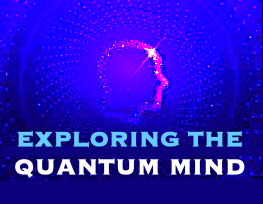
We’re hearing the term quantum more and more these days—especially in conversations about consciousness, human potential, and our connection to the greater cosmos. While it originates in the hard science of quantum physics, it’s now appearing far beyond laboratories and equations. Yes, some physicists cringe at the way quantum has been adopted to explain consciousness, but others welcome the parallel as a way to give language to intriguing research into Altered States of Consciousness (ASC).
As a layperson, I’ve found that the only way to responsibly engage with this trend is to gain at least a basic understanding of quantum principles. And in doing so, I’ve come to see how the language of quantum mechanics might offer new insights into how our minds work—and how we experience the world through the practices we engage in at the Cuyamungue Institute.
Quantum physics shows us a world very different from what we usually see—where particles can connect across great distances, where nothing is certain, and where simply observing something can change it. This unusual and interconnected view of reality can provide insight into what people experience in deep trance states.
Terms like quantum mind or quantum consciousness point to the idea that consciousness is not just neurons firing in the brain. Instead, they suggest that consciousness may be a fundamental feature of the universe—woven into the very fabric of space, time, and matter. In this view, our individual awareness is not isolated, but part of a greater field of intelligent consciousness that permeates all of existence.
Over nearly five decades of collective exploration through Ritual Body Postures, we’ve gathered thousands of accounts that suggest a far more expansive and multidimensional understanding of human consciousness. The experiences reported—timeless journeys, archetypal encounters, emotional release, and a profound sense of interconnectedness—are difficult to explain through conventional models of psychology or brain science alone. The language of the quantum mind offers a broader vocabulary—one that better describes the depth and richness of these trance states.
Just as quantum particles exist in a field of possibility until observed, our inner world may hold a vast spectrum of potential experiences—activated through intention, ritual, and presence.
Perhaps the frontiers of science and the frontiers of consciousness are pointing toward the same mystery, from different directions. When ancient ritual meets modern inquiry, something powerful awakens. As we continue our work at the Cuyamungue Institute, we participate in a vast, living field of intelligence—one that ritual, posture, and presence help us access more fully.
In this way, we keep leaning into that mystery. We listen. We explore. We remember. And in doing so, we just might be finding that ancient ways of knowing have always carried a quiet kind of quantum wisdom.
“The quantum mind reminds us that awareness is not contained, but woven into the fabric of existence itself.”
Paul Robear Tweet

